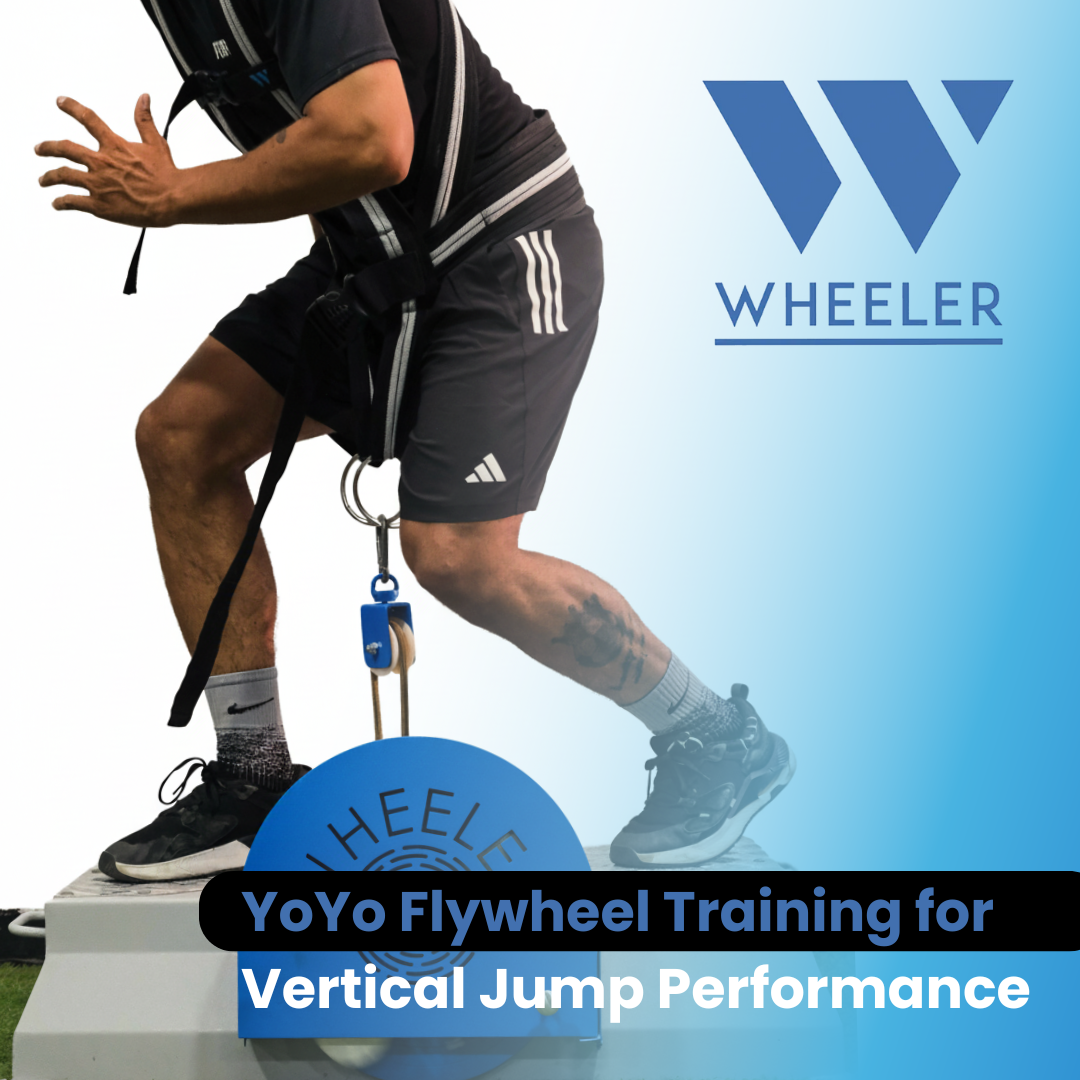YoYo Flywheel Training for Vertical Jump Performance
Abstract
Vertical jump ability is one of the most important indicators of explosive power in sports such as basketball, volleyball, and soccer. Its improvement depends not only on muscular strength but also on the efficiency of the stretch-shortening cycle (SSC). In recent years, eccentric overload training with flywheel devices such as the YoYo system has emerged as a powerful tool to enhance neuromuscular and tendinous adaptations, improving force production and elastic energy utilization. These adaptations directly translate into significant gains in vertical jump height and overall athletic performance. This article reviews the scientific evidence, physiological mechanisms, and practical applications of YoYo flywheel eccentric training for vertical jump performance.
Introduction
The vertical jump is a complex skill involving the interaction of muscular strength, tendon stiffness, intermuscular coordination, and SSC efficiency. Maximizing jump height has been a key goal in sports science, with methods such as plyometrics, resistance training, and Olympic lifts traditionally employed.
The YoYo flywheel system, based on the principle of inertia, introduces a novel eccentric overload stimulus. Energy generated during the concentric phase is stored in the flywheel and then returned during the eccentric phase, requiring the athlete to absorb and control higher loads than with conventional weights. This unique stimulus drives muscular and tendinous adaptations that improve power output in explosive tasks such as the vertical jump.
Determinants of Vertical Jump Performance
Vertical jump performance depends on multiple interacting factors:
- Maximal relative strength: ability to generate force relative to body mass.
- Rate of force development (RFD): speed of force production.
- Tendon stiffness: especially of the patellar and Achilles tendons, which optimize SSC efficiency.
- Neuromuscular efficiency: coordination of hip, knee, and ankle extensors.
- Technique and countermovement utilization.
Principles of Eccentric Flywheel Training
Eccentric training with the YoYo system provides:
- Greater recruitment of type II fibers, essential for explosive movements.
- Increased fascicle length, enhancing power production across longer ranges of motion.
- Self-regulated eccentric overload, producing high forces at end ranges.
- Superior SSC stimulus, maximizing elastic energy storage and release.
Structural Adaptations
YoYo flywheel training induces key structural changes:
- Selective hypertrophy of fast-twitch fibers.
- Increased thickness and stiffness of tendons (patellar and Achilles).
- Enhanced collagen density and alignment, improving force transmission.
- Reduced injury risk through stronger musculotendinous structures.
Mechanical Adaptations
- Greater functional stiffness of the muscle-tendon unit, optimizing ground contact times and SSC efficiency.
- Improved eccentric strength, allowing for more elastic energy storage during countermovement.
- Transfer to countermovement jump (CMJ) and drop jump (DJ), enhancing reactive strength.
Neuromuscular Adaptations
- Higher RFD, increasing explosive strength.
- Improved intermuscular coordination among gluteals, quadriceps, and triceps surae.
- Increased neural activation in both eccentric and concentric phases.
- Enhanced power output during short contact SSC tasks.
Scientific Evidence
- de Hoyo et al. (2015): found significant improvements in CMJ height after six weeks of YoYo flywheel training in professional soccer players.
- Askling et al. (2003): demonstrated that eccentric overload training enhances elasticity and explosive strength in elite athletes.
- Maroto-Izquierdo et al. (2017): reported increases in power, vertical jump height, and sprint performance following inertial resistance training.
- Tesch et al. (2017): confirmed that flywheel eccentric overload produces superior muscular adaptations compared to traditional weight training.
Practical Applications
Key YoYo Exercises for Vertical Jump
- Deep eccentric squat (bilateral and unilateral).
- Eccentric squat jump with flywheel.
- Eccentric lunges with overload.
- Drop catch eccentric drill, simulating landing and reactive strength.
Suggested Progression
- Initial phase: low inertia, bilateral movements, focus on technique.
- Intermediate phase: increased inertia, unilateral squats, countermovement integration.
- Advanced phase: combination with plyometrics, maximal jump drills, and sport-specific transfer.
Benefits for Vertical Jump Performance
- Increased CMJ and squat jump (SJ) height.
- Improved reactive ability in DJs.
- Reduced ground contact times in landings.
- Greater mechanical efficiency in explosive actions.
- Direct transfer to sport-specific tasks, such as volleyball blocks or aerial duels in soccer.
Limitations and Precautions
- Risk of excessive eccentric overload if introduced too early or with high inertia.
- Requires professional supervision to ensure proper execution and safe load progression.
- Lack of standardized protocols regarding inertia levels, volume, and progression.
- Limited long-term studies in elite athletes during competitive seasons.
Future Research Directions
- Comparative studies of plyometric vs. flywheel eccentric training on vertical jump outcomes.
- Analysis of combined effects (strength + YoYo + plyometrics).
- Studies on optimal load progression and inertia levels for maximizing jump performance.
- Longitudinal monitoring of adaptations in elite-level volleyball and basketball players.
Conclusions
Eccentric overload training using the YoYo flywheel system is a highly effective method to enhance vertical jump performance. By inducing structural, mechanical, and neuromuscular adaptations, this training optimizes tendon stiffness, eccentric strength, and explosive power. When integrated progressively and properly supervised, the YoYo system significantly improves jump height and transfers effectively to sport-specific performance demands.
References
- de Hoyo, M., et al. (2015). Effects of eccentric overload training using flywheel technology on performance in professional soccer players. Journal of Strength and Conditioning Research.
- Askling, C., et al. (2003). Eccentric training and muscle function in elite soccer players. Scandinavian Journal of Medicine & Science in Sports.
- Maroto-Izquierdo, S., et al. (2017). Effects of flywheel resistance training on strength, vertical jump and sprint performance. International Journal of Sports Physiology and Performance.
- Tesch, P. A., et al. (2017). Enhanced muscular adaptations with flywheel resistance exercise. European Journal of Applied Physiology.
Author


